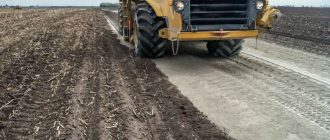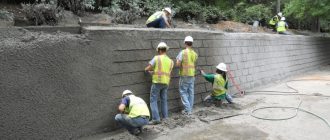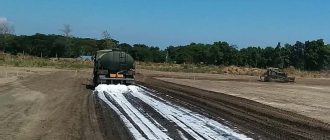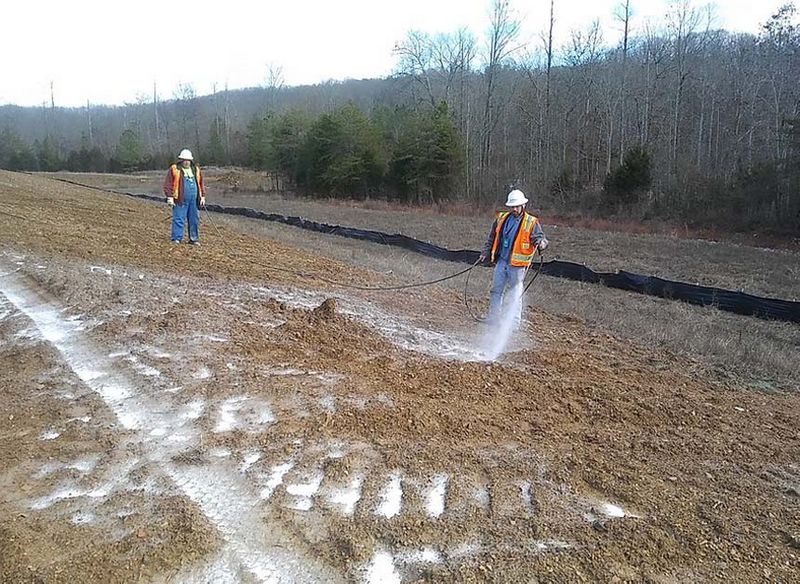
Key Considerations for Quality Control in Soil Stabilization Projects
In soil stabilization projects, quality control is a crucial aspect that ensures the success and longevity of the project. The process of soil stabilization involves treating soil to improve its properties, making it suitable for construction purposes. However, without proper quality control measures in place, the project may be at risk of failure, which can result in significant financial losses and delays.
There are several important considerations to keep in mind when implementing quality control in soil stabilization projects. Firstly, it is essential to conduct thorough soil testing and analysis before commencing any stabilization work. This helps determine the specific characteristics and composition of the soil, allowing for appropriate treatment methods to be selected.
Another key consideration is the selection and proper application of stabilizing agents. These agents, such as lime or cement, are added to the soil to enhance its strength and durability. It is crucial to ensure that the proper type and amount of stabilizing agent are used, as using too little or too much can result in ineffective stabilization or even damage to the soil structure.
Additionally, regular inspection and testing throughout the project are vital to monitor the progress and effectiveness of the stabilization process. This includes assessing factors such as compaction levels, moisture content, and strength properties. Any deviations or issues should be promptly addressed to maintain the quality and integrity of the stabilized soil.
Overall, quality control is a critical aspect of soil stabilization projects, and it should never be overlooked. By considering factors such as thorough soil testing, proper selection and application of stabilizing agents, and regular inspection and testing, project managers can ensure the success and longevity of their soil stabilization projects.
Understanding Soil Stabilization
Soil stabilization is a key process in various construction projects. It involves enhancing the engineering properties of soil to increase its strength, durability, and load-bearing capacity. This is achieved through the addition of different stabilizing agents, such as lime, cement, or bitumen, to the soil.
Quality control is crucial for soil stabilization projects to ensure successful outcomes. Several considerations need to be taken into account to achieve the desired results. These considerations include:
1. Testing: Before initiating the stabilization process, thorough testing of the soil should be conducted to determine its chemical composition and engineering properties. This information is essential in selecting the appropriate stabilizing agent and determining the required dosage.
2. Proper Mixing: The proper mixing of the soil and stabilizing agent is crucial to achieve uniform distribution and maximum effectiveness. Special attention should be given to the mixing time, techniques, and equipment used to ensure a consistent and homogenous mixture.
3. Compaction: Compaction is essential to enhance the strength and stability of the stabilized soil. It is important to monitor and control the compaction process to achieve the desired density and minimize the potential for settlement or deformation.
4. Quality Assurance: Regular quality control checks should be conducted throughout the soil stabilization process to ensure that the desired results are being achieved. These checks may include laboratory testing of samples, field density measurements, and performance evaluations.
5. Environmental Considerations: Soil stabilization should also take into account environmental considerations. The stabilizing agents used should meet environmental regulations and minimize any negative impact on the surrounding ecosystem.
By considering these key quality control considerations, soil stabilization projects can achieve success in terms of improved soil performance, reduced maintenance, and increased structural integrity.
Importance of Quality Control
Quality control is a key consideration in soil stabilization projects. Ensuring the quality of materials and processes is essential for the success of these projects.
Quality control involves monitoring and testing the various components of soil stabilization projects to ensure that they meet the necessary standards. This includes testing the soil for its physical properties, such as compaction and moisture content, as well as analyzing the materials used for stabilization for their quality and compatibility.
By maintaining strict quality control measures, project managers can identify any issues or potential problems early on, allowing for timely corrective actions. This helps to prevent costly delays or failures in the overall stabilization process.
Additionally, quality control provides assurance that the stabilized soil will have the desired properties for its intended use. This is crucial for projects such as road construction or building foundations, where the stability and durability of the soil are critical.
Overall, quality control plays a vital role in soil stabilization projects by ensuring that all aspects of the project meet the necessary standards. By implementing effective quality control measures, project managers can increase the likelihood of success and reduce the risks associated with poor quality materials or improper stabilization techniques.
Key Considerations for Quality Control in Soil Stabilization Projects
Quality control is a critical component of any soil stabilization project. Ensuring the success of these projects requires careful attention to key considerations to maintain the desired soil stability and durability.
The following are important considerations for quality control in soil stabilization projects:
| Key | Considerations |
| 1 | Selection of appropriate soil stabilization techniques |
| 2 | Accurate testing and analysis of soil properties |
| 3 | Monitoring and verification of stabilization process |
| 4 | Proper mixing and application of stabilizing agents |
| 5 | Regular inspection and testing of stabilized soil |
| 6 | Compliance with project specifications and standards |
| 7 | Quality control documentation and record keeping |
By considering these key elements and implementing rigorous quality control measures, soil stabilization projects can achieve the desired results and ensure long-term performance of the stabilized soil.
Assessing Soil Properties
When undertaking soil stabilization projects, it is essential to thoroughly assess the properties of the soil. This assessment serves as a key element in ensuring the success of the project and achieving desired stabilization outcomes.
There are several considerations to keep in mind when assessing soil properties for quality control in soil stabilization projects:
- Soil Composition: Understanding the composition of the soil is crucial. It determines the materials and methods needed for stabilization. The soil composition can be determined through laboratory testing, including particle size analysis, soil classification, and moisture content measurements. This information helps in selecting adequate stabilizing agents.
- Soil Strength: Assessing the strength of the soil is vital to identify its bearing capacity. Various tests, such as the Proctor and California Bearing Ratio (CBR) tests, can provide insights into the soil’s strength and compaction characteristics. This information aids in determining the type and amount of stabilization required.
- Moisture Content: Soil moisture content significantly affects its engineering properties. It is imperative to evaluate and monitor the moisture content in order to maintain optimal conditions for stabilization. Too much or too little moisture can hinder the effectiveness of stabilization methods.
- Plasticity: The plasticity of the soil is determined by tests such as the Atterberg limits test. It helps in classifying the soil and understanding its behavior when subjected to loads or changes in moisture content. Stabilization techniques may need to be adjusted based on the soil’s plasticity.
- Contamination: Soil contamination can have detrimental effects on stabilization. It is crucial to assess and identify any contaminants present in the soil, such as organic matter, chemicals, or pollutants. Proper remediation measures should be implemented to ensure effective stabilization.
By carefully assessing these soil properties, project managers can make informed decisions and develop appropriate stabilization plans. Regular monitoring and testing throughout the project duration will also enable necessary adjustments to be made, ensuring quality control and successful soil stabilization.
Selection of Stabilization Techniques
When it comes to soil stabilization projects, the selection of the right stabilization techniques is a key consideration in ensuring the quality and success of the project. There are several factors that need to be taken into account when choosing the appropriate techniques for soil stabilization.
Firstly, it is important to assess the type of soil and its characteristics. Different soils require different stabilization techniques. For example, cohesive soils may require the use of cement or lime stabilization, while granular soils may benefit from techniques such as chemical stabilization or mechanical stabilization.
Secondly, the project requirements and objectives should also be considered. The desired outcome of the project, whether it is to improve the strength and stability of the soil or to reduce its susceptibility to erosion, will influence the choice of stabilization techniques.
Budget and time constraints are another important factor in the selection process. Certain stabilization techniques may be more costly or time-consuming than others, so it is essential to consider these limitations when making a decision.
Environmental factors should also be taken into account. Some stabilization techniques may have an impact on the surrounding environment, such as the use of chemical additives. It is important to choose techniques that minimize any potential negative effects on the environment.
Finally, it is crucial to consider the expertise and experience of the project team. Certain stabilization techniques may require specialized knowledge and equipment, so it is important to ensure that the team has the necessary skills and resources to implement the chosen techniques effectively.
In conclusion, the selection of stabilization techniques in soil stabilization projects is a critical factor in ensuring quality control and project success. By considering the type of soil, project requirements, budget and time constraints, environmental factors, and the expertise of the project team, the most appropriate stabilization techniques can be chosen to achieve the desired outcomes.
Monitoring Construction Practices
In order to ensure the quality control for soil stabilization projects, it is crucial to have a thorough monitoring system in place. This allows for the identification and rectification of any construction practices that may compromise the success of the project.
Key considerations for monitoring construction practices include:
- Regular inspections: Conducting regular inspections throughout the construction process is essential for identifying any deviations from the specified plans and guidelines. This allows for timely correction of any issues that may arise, ensuring that the project stays on track.
- Qualified personnel: Having qualified personnel on-site to oversee the construction practices is imperative. These individuals should have a deep understanding of soil stabilization techniques and be able to identify any potential problems or risks.
- Documentation: Keeping detailed documentation of the construction practices is important for quality control purposes. This includes recording all the materials used, testing results, and any deviations or modifications made during the construction process.
- Testing: Conducting regular testing of the soil and stabilizing agents is crucial to ensure that the desired stabilization and strength are being achieved. Testing should be performed at various stages of the project to monitor progress and make any necessary adjustments.
- Communication: Effective communication between the different parties involved in the project is essential for monitoring construction practices. This includes regular meetings, clear and accurate reporting, and addressing any concerns or questions in a timely manner.
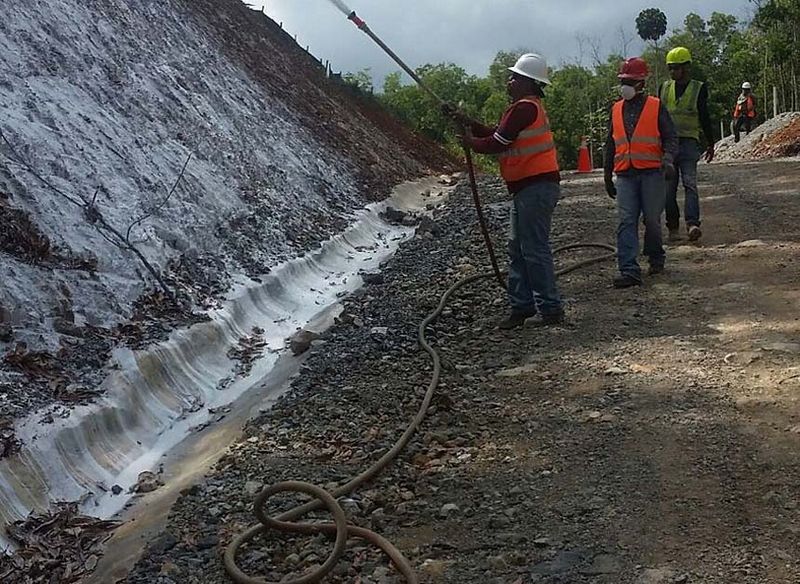
By implementing a comprehensive monitoring system that covers these key considerations, project managers can ensure that construction practices are in line with the quality control standards. This ultimately contributes to the success of soil stabilization projects.
Sampling and Testing Procedures
When conducting soil stabilization projects, it is essential to have a systematic method for sampling and testing the soil. By following key considerations in this process, project managers can ensure the success of their stabilization efforts.
- Representative Sampling: It is crucial to obtain representative samples of the soil to accurately assess its properties. Sampling should be done at various depths and locations within the project site to account for any variations in soil composition.
- Proper Sample Handling: The collected soil samples should be handled carefully to prevent any contamination or alteration of their properties. They should be stored in clean, labeled containers and protected from sunlight and extreme temperatures.
- Testing Methods: There are different testing methods available to evaluate the suitability of soil for stabilization. These methods may include laboratory tests, such as compaction tests, shear strength tests, and permeability tests, as well as field tests, such as the use of portable moisture meters or penetrometers.
- Quality Control Measures: Quality control measures should be implemented throughout the sampling and testing process to ensure accurate and reliable results. This may involve verifying the calibration of testing equipment, conducting duplicate tests for validation, and adhering to proper testing protocols and standards.
- Data Analysis and Interpretation: Once the soil samples have been tested, the data should be analyzed and interpreted to determine the appropriate stabilization methods and materials. This analysis will help project managers make informed decisions and develop an effective soil stabilization plan.
By following these key considerations for sampling and testing procedures, project managers can confidently assess the soil properties and select the most suitable stabilization techniques. This will ultimately contribute to the success of soil stabilization projects by ensuring the long-term stability and durability of the treated soil.
Quality Assurance in Material Selection
Material selection is a key component for ensuring quality control in soil stabilization projects. The success of these projects relies heavily on using the right materials that meet certain quality standards.
Quality assurance starts with the identification of suitable materials for soil stabilization. The chosen materials should possess the necessary characteristics required for effective stabilization, such as strength, durability, and compatibility with the existing soil.
One of the key considerations in material selection is the quality of the soil itself. Testing the soil composition and properties is crucial in determining the type and amount of additives needed for stabilization. This helps ensure that the selected materials will effectively strengthen and stabilize the soil.
Another important aspect of quality assurance is the sourcing of materials. It is important to carefully select suppliers and sources that provide high-quality materials. Conducting thorough research and due diligence in evaluating suppliers can help prevent the use of substandard materials in the project.
The materials should also undergo rigorous testing before being used in soil stabilization projects. This ensures that they meet the required quality standards and will effectively perform their intended functions. Testing can include various physical and chemical tests to assess factors like strength, durability, and compatibility.
Regular quality control checks throughout the project are essential to maintain the desired quality levels. Monitoring the materials during the construction process helps identify any deviations from the specified standards and allows for timely corrective actions.
Overall, quality assurance in material selection plays a vital role in ensuring the success of soil stabilization projects. By carefully considering and testing the chosen materials, along with implementing effective quality control measures, it is possible to achieve desired outcomes and long-term stability.
Establishing Performance Criteria
When considering quality control in soil stabilization projects, it is important to establish clear performance criteria. These criteria will serve as benchmarks for evaluating the success and effectiveness of the stabilization efforts.
Performance criteria can vary depending on the specific goals of the project, but they generally involve key measures of soil quality and stability. Some common performance criteria for soil stabilization projects include:
| Strength | Assessing the ability of the stabilized soil to support the required load without excessive deformation or failure. |
| Compaction | Determining the level of soil compaction achieved after stabilization, which affects its ability to resist settling and improve stability. |
| Permeability | Evaluating the degree to which the stabilized soil allows water or other fluids to pass through, which can impact drainage and erosion control. |
| Uniformity | Assessing the consistency of the stabilization treatment and distribution of the stabilizing agent throughout the soil. |
| Environmental impact | Evaluating the potential effects of the stabilization process on the surrounding environment, including soil contamination and the release of harmful pollutants. |
By establishing these performance criteria upfront, quality control measures can be put in place to ensure that the soil stabilization project meets the desired objectives and specifications. Regular testing and monitoring should be done throughout the project to assess and verify compliance with these criteria.
Environmental Considerations
In the context of quality control in soil stabilization projects, it is essential to consider the environmental impacts and factors that may affect the success of the project. These considerations play a key role in ensuring that the project meets the required standards and minimizes any potential negative effects on the environment.
One key consideration is the impact on natural habitats and ecosystems. Soil stabilization projects can involve the use of various materials and additives, such as lime or cement, which may have potential impacts on the surrounding flora and fauna. It is important to assess and mitigate any potential harm to sensitive ecological areas or endangered species.
Another important consideration is the potential for contamination of water sources. Soil stabilization projects often involve the use of chemicals or materials that may leach into nearby water bodies, such as rivers or groundwater. Proper measures should be taken to prevent or minimize the pollution of these water sources, including the use of appropriate containment methods and monitoring systems.
Furthermore, air quality should also be considered. Dust and particulate matter can be generated during soil stabilization activities, which may have negative impacts on air quality, as well as the health of nearby communities. Proper dust control measures, such as water sprays or dust suppression agents, should be implemented to minimize these effects.
In summary, considering the environmental aspects of soil stabilization projects is crucial for ensuring its quality and success. This involves mitigating potential impacts on natural habitats and ecosystems, preventing contamination of water sources, and addressing air quality concerns. By incorporating these considerations into the project planning and implementation, it is possible to minimize the environmental impacts and achieve a successful outcome.
Compliance with Regulatory Standards
Ensuring compliance with regulatory standards is a key consideration for soil stabilization projects. These projects involve the use of various techniques and materials to improve the strength and durability of soil.
In order to meet regulatory standards, it is important to carefully follow guidelines and specifications set forth by local, regional, and national authorities. This includes obtaining necessary permits and approvals before commencing any work.
Compliance with regulatory standards also involves conducting regular inspections and tests to ensure that the soil stabilization materials and techniques are being implemented correctly. This may include testing the soil for its composition and strength, as well as monitoring the effectiveness of the stabilization methods.
Quality control measures should also be implemented throughout the project to document compliance with regulatory standards. This may include keeping detailed records of construction activities, materials used, and test results.
Failure to comply with regulatory standards may result in fines, legal issues, and delays in project completion. It is therefore essential to prioritize compliance and work closely with regulatory authorities to ensure a successful soil stabilization project.
Training and Awareness
In order to ensure the quality of soil stabilization projects, it is essential to provide appropriate training and create awareness among all key stakeholders involved in the process.
Considerations for training include:
1. Technical Expertise: Individuals involved in soil stabilization projects should undergo training to acquire the necessary technical knowledge and skills. This includes understanding the properties and behavior of soil, as well as the various stabilization methods and techniques.
2. Quality Control Procedures: Training should also cover the implementation of quality control procedures, such as proper testing and monitoring of soil samples, adherence to project specifications, and identification of potential issues and risks.
3. Safety: It is important to incorporate safety procedures and guidelines into the training to ensure the well-being of workers and mitigate any potential hazards associated with soil stabilization projects.
4. Environmental Considerations: Training should address the importance of minimizing the environmental impact of soil stabilization projects. This includes proper waste management, prevention of soil erosion, and compliance with relevant environmental regulations.
In addition to training, creating awareness among stakeholders is crucial for successful soil stabilization projects. This includes:
1. Communication: Establishing effective communication channels among project team members, contractors, and other stakeholders is essential to ensure everyone is informed and aligned with project objectives and requirements.
2. Stakeholder Engagement: Engaging stakeholders, such as local communities and regulatory authorities, helps build trust and facilitates involvement in decision-making processes, ultimately contributing to the success of soil stabilization projects.
3. Education and Outreach: Conducting educational programs and outreach activities can help raise awareness about soil stabilization projects and their benefits. This can include organizing workshops, seminars, and information sessions.
By prioritizing training and awareness, soil stabilization projects can be carried out with enhanced quality control measures, leading to successful outcomes.
Frequently asked questions:
What is soil stabilization?
Soil stabilization is a process used to improve the properties of soil and make it more durable and stable for construction projects. It typically involves adding certain materials or chemicals to the soil to enhance its strength, bearing capacity, and resistance to erosion.
Why is quality control important in soil stabilization projects?
Quality control is crucial in soil stabilization projects to ensure that the stabilized soil meets the desired engineering properties and can adequately support the proposed structure. It helps in identifying any potential issues or deficiencies in the stabilization process and allows for corrective measures to be taken before the project progresses further.
What are some key considerations for quality control in soil stabilization projects?
Some key considerations for quality control in soil stabilization projects include thorough testing of the soil and stabilization materials, monitoring of the stabilization process, regular inspections of the stabilized soil, and proper documentation of all the quality control procedures and results. It is also important to adhere to the specified design guidelines and project specifications to ensure the success of the soil stabilization project.
How can quality control help in ensuring the success of soil stabilization projects?
Quality control plays a vital role in ensuring the success of soil stabilization projects as it helps to identify any problems or deficiencies in the stabilization process early on. By regularly monitoring and testing the stabilized soil, any issues can be addressed promptly, leading to a higher chance of achieving the desired engineering properties and overall project success. This helps in preventing any accidents, failures, or costly repairs in the future.


